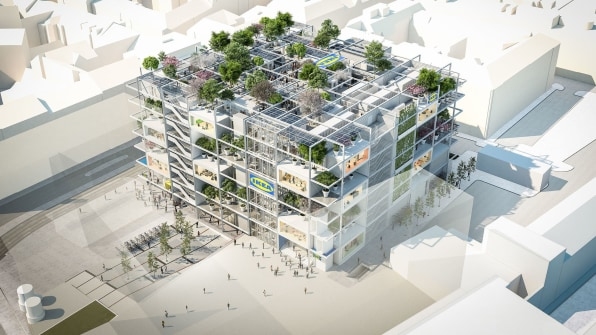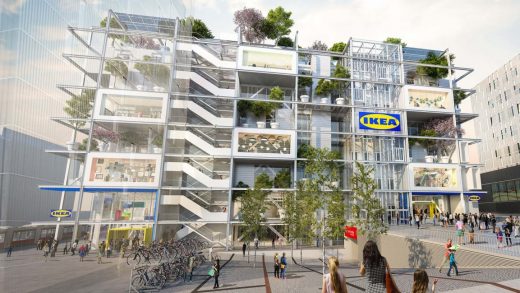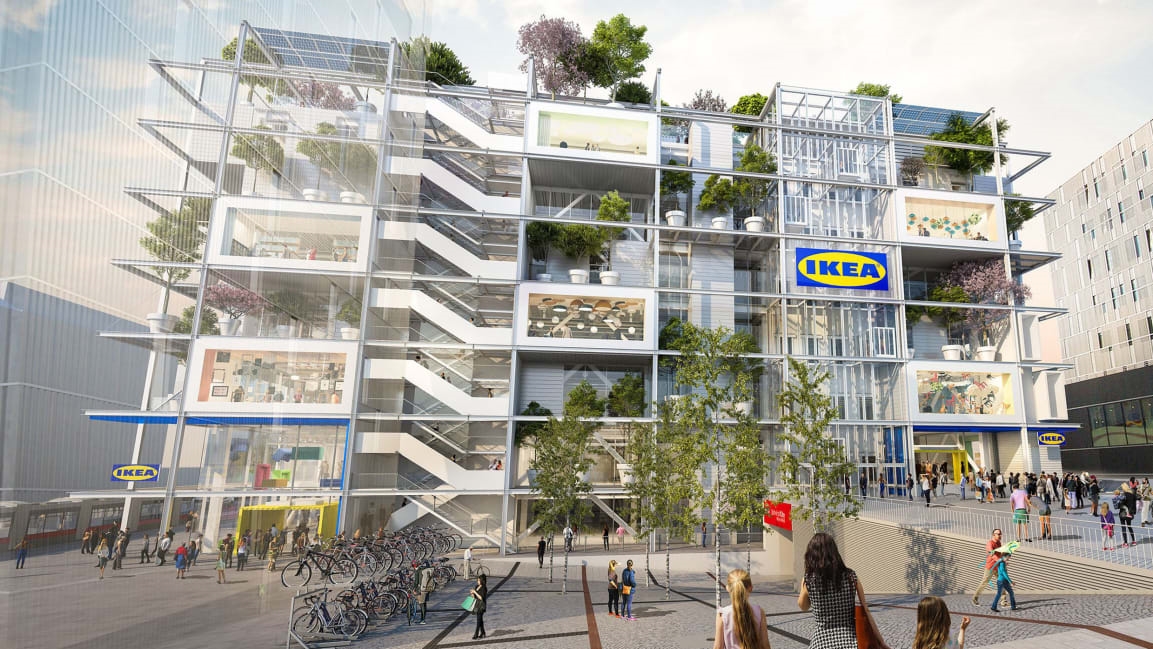This new Ikea store has zero parking spaces
A typical Ikea store comes with a sprawling parking lot—in Burbank, California, for example, the lot has room for 1,700 cars. But as the company works to shrink its carbon footprint, including the pollution from customers driving to suburban stores, it’s also rethinking parking. A new seven-store building that will house an Ikea store in central Vienna, now under construction, will have zero parking spaces.
“The whole building is geared towards pedestrians, subway and streetcar riders, and cyclists—there is no space for cars,” the company writes in German on a store website. The location is next to a tram stop and a three-minute walk from a subway station; like other parts of the city, it’s easily accessible by bike. Anything that customers can’t easily carry away will be delivered from a new logistics center farther away (and soon, as with other Ikea stores, those deliveries will happen via electric delivery vans). “Our concept is that parking spaces are not needed, because there are no products to buy that require a car,” the website says. The company’s stores in other large cities are beginning to take similar approaches; there’s a store in Manhattan that serves solely as a showroom.

Without the need for parking, the building has room for other uses. “It influenced our design radically,” says architect Jakob Dunkl, the owner of Querkraft, the Vienna-based firm that worked on the project, comparing it to another Ikea store in Hamburg that’s a similar size, but devotes the top floors to parking. “Instead of two parking floors, we have two hostel floors. And there’s a huge roof terrace which is open to the public.” The ground level will house retailers from an older building that was displaced by the new construction.
The roof, which is open even at times Ikea is not, serves as a public park. The building is also surrounded by greenery as another part of its sustainability strategy. The “urban heat island” effect, the fact that cities covered in heat-absorbing concrete and asphalt tend to get hotter than the surrounding countryside, can be mitigated with plants; as Vienna deals with increasing heatwaves fueled by climate change, the city is now deliberately adding new parks and encouraging architects to incorporate cooling strategies. The Ikea building is designed with a nearly 15-foot setback on all sides to make room for balconies planted with large trees.
On all of the facades, plus the roof, there are a total of 160 trees. “That’s many more than would have been able to be planted on the site itself,” says Dunkl. The trees will help shade the glass facades, keeping the store cool on the hottest days. As they cool the neighborhood, they will also help clean air pollution and CO2—created by cars headed to other places—from the air.
The architects say that the design is sustainable in another way: Unlike a standard big-box store, the design is aesthetically interesting enough that people should want to keep it around in the future rather than tearing it down. “We believe in sustainability through identity, through beauty,” Dunkl says. The space can also easily be adapted for other uses. “It’s a very flexible building that can contain this furniture store now, and maybe 20 or 30 years later, it’s something else.”
(34)



